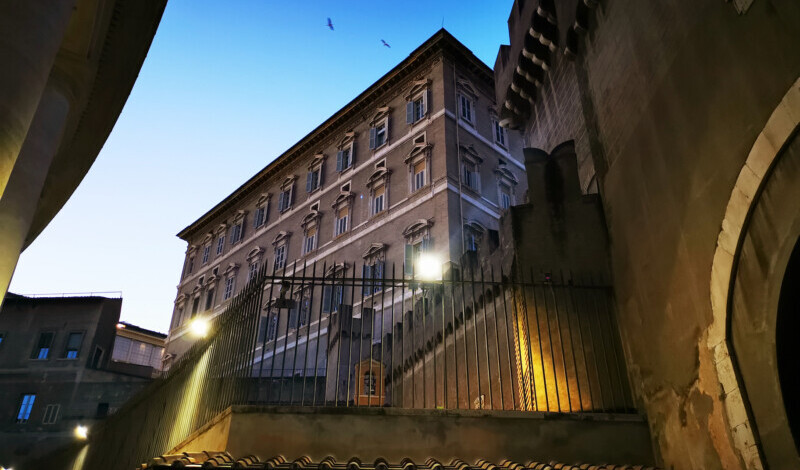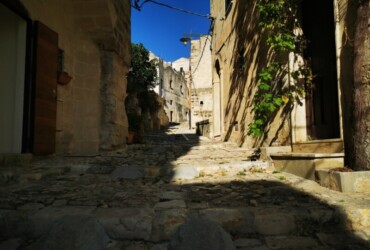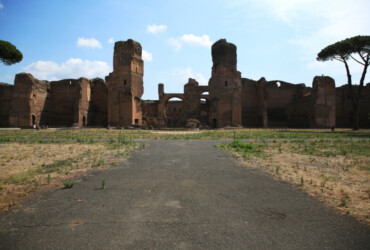In the last year and a half, I have begun to visit Rome more consistently, to discover and learn about those aspects of the city that are still unknown to me. A week ago, day or day less, I went for a walk in Borgo Pio and Borgo Sant’Angelo.
Rome tells its story through its streets
In addition to the things in plain sight, the most famous and well-known streets and monuments, there are also many small details to observe. There are also many other aspects of the story to know and recognize.
My tour, indeed that of the visit with Sinopie, took me from Castel Sant’Angelo to San Pietro to rediscover the Borgo area.
Castel Sant’Angelo
The popes “demand” to return to Rome, together with the papal seat transfer from San Giovanni to San Pietro. The passage, therefore, connects the basilica to Castel Sant’Angelo: one kilometre long, built on two levels, reaches up to the apostolic palace.
A curiosity: do you know why it is called “Castel”? From a castle, perhaps? But no! It derives from “castrum”, because it was born as a fortress and not as a castle. The structure has four towers, like the evangelists. The angel on the top is the fifth-placed there over the centuries; it is made of bronze and dating back to the 1700s.
In 1565 Borgo Pio “was born”, which with “Borgo Vecchio” and “Borgo Nuovo” were a sort of connection between San Pietro and Castel Sant’Angelo. The two (“vecchio” and “nuovo”) are no longer there; both were demolished to create via della Conciliazione (“conciliation” between the church and the Italian state). Ideally, they are the two side streets of via della Conciliazione (the conciliation auditorium was also home to the Academy of Santa Cecilia for some years).
Borgo Pio
From via della Conciliazione we enter Borgo passing Porta Castello and passing the LUMSA, where we find the district representative fountain. This fountain is the one with the cannonballs, which come directly from Castel Sant’Angelo.
The most remarkable peculiarity of Borgo Pio is that of being a sort of small city “in the city”, compared to the others in the city: it is “closed”, and it is as if it were a country apart (a “country within the city”). Its buildings, then, still retain their original structure. About halfway down the street, a fountain looks like a shrine: here, the rotten water passes, which was brought to us by Pius IX.
There is no shortage of curiosities about Borgo, too: via dei tre pupazzi is so-called because there was a coffin with three human figures carved on it. Also, keep an eye on the buildings’ walls: there you will find several very lovely Street Artworks (made by Maupal).
While walking through Borgo Pio, the Leonine Walls are often noticed: these define the Borgo’s perimeter and had a defensive and structural function (many of the houses in the area are leaning against the walls themselves).
Another small curiosity concerns Vicolo del Campanile: here there is a medieval building (1520) decorated with graffiti, and it is the one where Mastro Titta lived. Who is Mastro Titta? Also known as “er boja de Roma”, he was an executor of the Papal State’s capital sentences: in fact, when Mastro Titta “crossed the bridge” he meant that there was a ready execution. They carry out executions until 1870, when the papal state falls.
Just so as not to miss other curiosities: the Prati district, which was born after the demolitions for Via della Conciliazione, was specially designed near the Vatican … But without being able to see the Dome of St. Peter! This is because it was intended as a non-religious neighbourhood.
Borgo Santo Spirito
We enter Borgo Santo Spirito, which extends from Via di San Pio X to St. Peter’s Square, and we stop in front of the old hospital complex (the new one overlooks the Lungotevere).
Here we find the wheel of the innocents, inside a hut with a grate in front of the wheel itself. The first wheel was commissioned by Pope Innocent III in 1198 to end the practice of abandoning children: women who gave birth and did not want to keep the child could leave them in the wheel anonymously. I told about the wheel a few years ago, in a post on the unusual and secret Rome (“Vatican edition and surroundings”).
Continuing along the street, going towards the Vatican, in front of the Church of Santo Spirito in Sassia, we find the prisons’ building: both the church and the latter are definitely noteworthy.
Via della Conciliazione
As we know from history, many of the Borgo areas were destroyed to build this road (especially Borgo Vecchio and Nuovo).
The central core of the old quarter was Piazza Scossacavalli: it had a square shape. It was located in the middle of Borgo Nuovo and Borgo Vecchio (today, they would be the two side streets of Via della Conciliazione). The square was the centre of the “Spina di Borgo” (so-called because it resembles the median strip of a Roman circus), made up of several blocks that unfolded between Castel Sant’Angelo and San Pietro. Today we find a “reminder” of the ancient square in the small Via Scossacavalli, which connects Borgo Santo Spirito with Via della Conciliazione.
Saint Peter Basilica
We finish the tour by entering the Vatican for a look at the Apostolic Palace. Not far away, Near one of the archways of the passetto and also close to the arcade of Piazza San Pietro, in Largo del Colonnato, we find the fountain of the Tiare by Pietro Lombardi (1927, made of travertine).
The fountain bears various papal symbols: the water flows from the keys of St. Peter, in turn, surmounted by four papal tiaras.





Sai che sto facendo lo stesso nella mia bella Venezia? E sempre con lo stupore di vedere cose nuove o riscoprire degli aspetti che avevo trascurato. Il lato buono delle limitazioni ai viaggi…
Alla fine anche queste limitazioni hanno avuto un lato “buono”: ho riscoperto tanto di Roma, della sua storia e della sua bellezza 🙂